“Don’t trust anyone over 30 — except Bucky Fuller”
— 1960s aphorism
Dear Friend and Reader:
Someone please share this post with some twenty-somethings.
Wendesday is the birth anniversary of Buckminster Fuller, engineer, philosopher and inventor. We need Bucky more today than we ever have. For all the talk about environmental problems and resources running out, and the constant threats that “it’s all going to collapse,” I think it’s a little odd that the guy who could solve nearly any practical problem is forgotten. Perhaps like my friend Marshall McLuhan, his ideas will make a comeback.
Thanks to Frances McEvoy, we have his birth time. Also pls note: the prior Neptune-Pluto conjunction before Bucky’s birth was 1393. The next one will be in 2384.
Fuller was a visionary, determined to solve the hidden problems that lead to the vast waste of resources. He understood that there is enough here — we have enough of all resources on Earth. It’s all a matter of how we use and distribute them. He understood synergy — the whole is greater than the sum of the parts.
He named and developed (but did not personally invent) the geodesic dome, a highly stable, lightweight, portable building; however he so refined the concept that he received a patent for it in June 1954. This one idea could solve a lot of our problems.
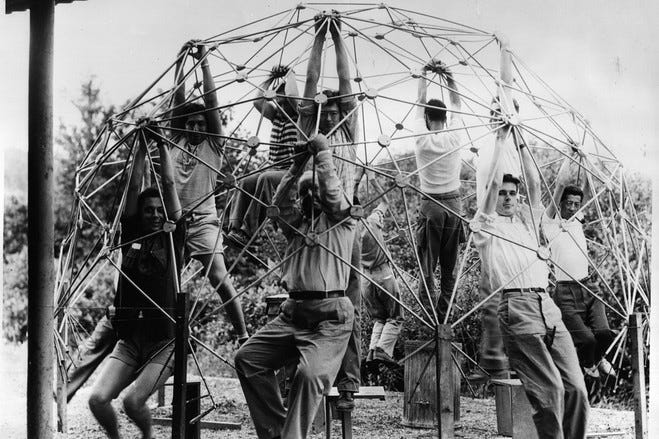
The Red Light Problem:
Two Hundred Million Horses Jumping Up and Down
To give one small example of his approach to design, he’s the only person I’ve ever heard express concern about all the cars sitting at red lights. I think about this almost every time I am waiting for the light to change.
He described this situation as “two hundred million horses jumping up and down all the time,” based on his calculation of a million cars at all times sitting still at red lights with the engine running, at about 200 horsepower each. Now you have something to ponder whenever you’re sitting at a corner at 3 am waiting for five minutes while nothing much is happening.
Bucky invented a three-wheeled vehicle called the Dymaxion Car in the 1930s that could seat four people including the driver, get up to 30 mpg and travel at 126 mph. That’s far better than my stick-shift Subaru Forester (which seats four and gets 24 mpg on the highway traveling at about 80 mph).
The Dymaxion Car could be parallel parked in a space six inches larger than the vehicle itself (I am envious; I’m looking for someone to sponsor my proposed Blindfolded Parallel Parking Competition — maybe the Kiwanis Club, I’ll ask them). The Dymaxion Car looks like a little airplane without wings, and I think this particular one is the most beautiful shade of green I’ve ever seen outside of a forest.
Proud Member of the ‘Lunatic Fringe’
Astrology data-master Lois Rodden described Bucky: “American scientist, the brilliant engineer and inventor of the geodesic dome which combines a series of tetrahedron skeletons, a writer and lecturer. Labeled both a crackpot and a genius, he was awarded nearly 40 honorary degrees from universities in the U.S. and the UK and was the author of 20 books, including his perhaps best-known work, Operating Manual for Spaceship Earth, 1970.”
Fuller was in all ways an outsider who found his way to significant recognition within his own lifetime.
He once wrote, “You never change things by fighting the existing reality. To change something, build a new model that makes the existing model obsolete.”
He was an accomplished pilot and sailor. In one of his books, he writes, “I’m not going to take you across the ocean in my airplane or ship unless I know what I’m doing,” an idea I often relate to my astrological work.
“We should do away with the absolutely specious notion that everybody has to earn a living. It is a fact today that one in ten thousand of us can make a technological breakthrough capable of supporting all the rest. The youth of today are absolutely right in recognizing this nonsense of earning a living. We keep inventing jobs because of this false idea that everybody has to be employed at some kind of drudgery because, according to Malthusian Darwinian theory he must justify his right to exist. So we have inspectors of inspectors and people making instruments for inspectors to inspect inspectors. The true business of people should be to go back to school and think about whatever it was they were thinking about before somebody came along and told them they had to earn a living.” ― Buckminster Fuller
He also invented the Dymaxion House, shown above at the Henry Ford Museum. This was a lightweight home perfected in 1930 that used an air vortex to draw cooler air downward into the living space. He was an innovator of what we today call the Tiny House movement (but I’d rather live in a round building than a box).

In 1927, at age 32, Fuller lost his job as president of a company called Stockade. The Fuller family had no savings, and the birth of their daughter Allegra in 1927 added to the financial challenges.
Fuller drank heavily and reflected upon the solution to his family's struggles on long walks around Chicago. During the autumn of 1927, Fuller wrote that he contemplated suicide by drowning in Lake Michigan, so that his family could benefit from a life insurance payment.
Fuller said that he had experienced a profound incident which would provide direction and purpose for his life. He felt as though he was suspended several feet above the ground enclosed in a white sphere of light. A voice spoke directly to Fuller, and declared:
From now on you need never await temporal attestation to your thought. You think the truth. You do not have the right to eliminate yourself. You do not belong to you. You belong to the Universe. Your significance will remain forever obscure to you, but you may assume that you are fulfilling your role if you apply yourself to converting your experiences to the highest advantage of others.
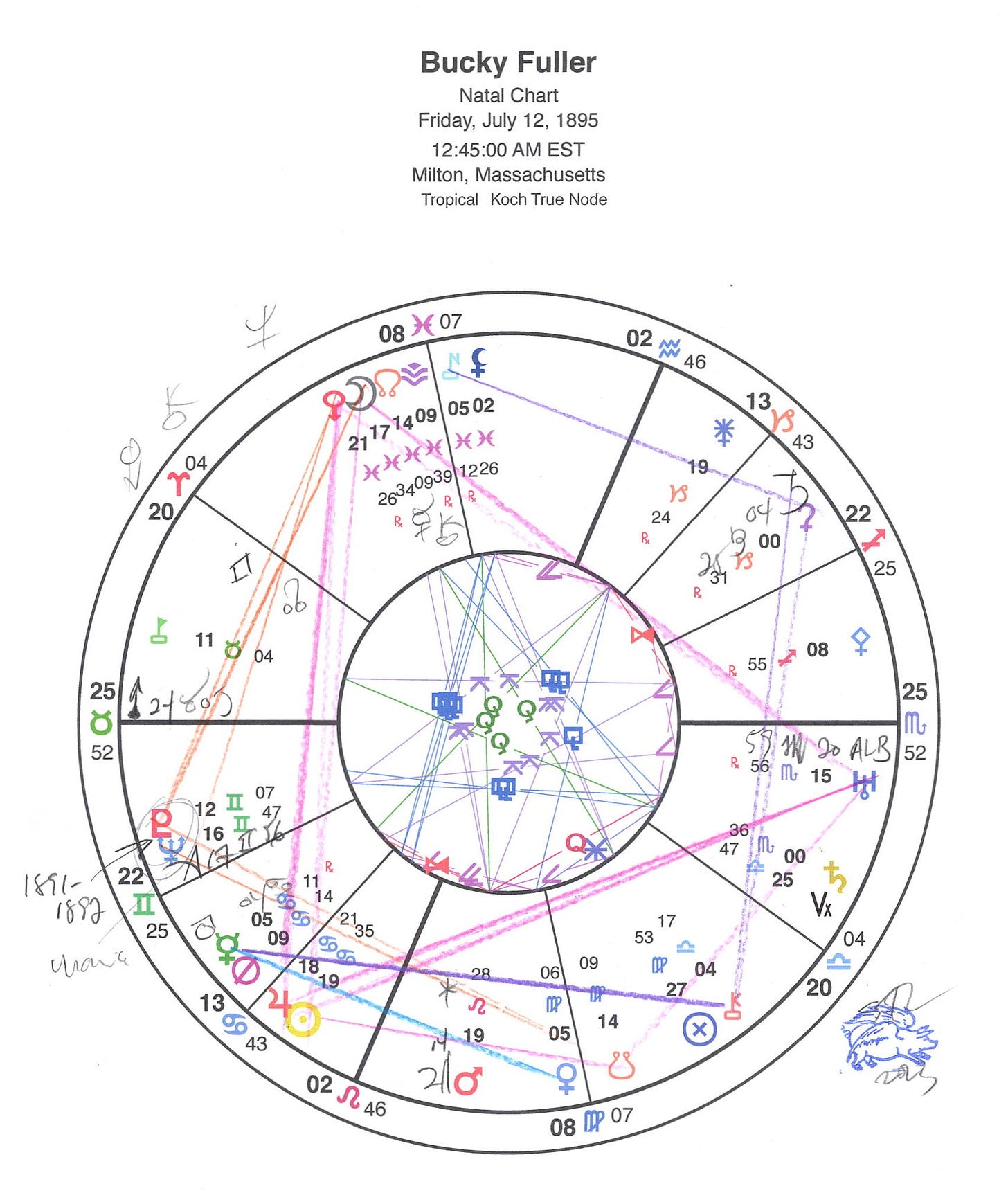
Fuller was born during the Neptune-Pluto conjunction of the early 1890s (the prior one was in 1399 and the next will be in 2385). The conjunction becomes a personal factor in his chart because his Moon and lunar nodes are square it.
In other words, the conjunction manifests for him as a personal turning point in this incarnation. What you have square the lunar nodes you must take on board as part of your personal karma. Said another way, when something is square the nodes, that becomes the key to accessing any spiritual growth at all.
To help with this project, he has the rare conjunction blended with asteroid Urania, which is about inventions and science. In other words, he is responding to the spiritual crisis of Neptune-Pluto by being inventive and using applied science in response to what he perceives.
Two other notable individuals devoted to technology, were born with the Moon conjunct Eris, Bill Gates and Steve Jobs. Their conjunction is in Aries, and is far more self-serving; his is in Pisces, and is more devoted to service.
Much like the Uranus-Neptune conjunction of the 1990s a century later, the Neptune-Pluto conjunction (exact 1891-1892) is square Eris. The square is not as tight as it was in the 1990s, but it’s there — particularly as the decade develops.
More details about his chart in the podcast.
with love,



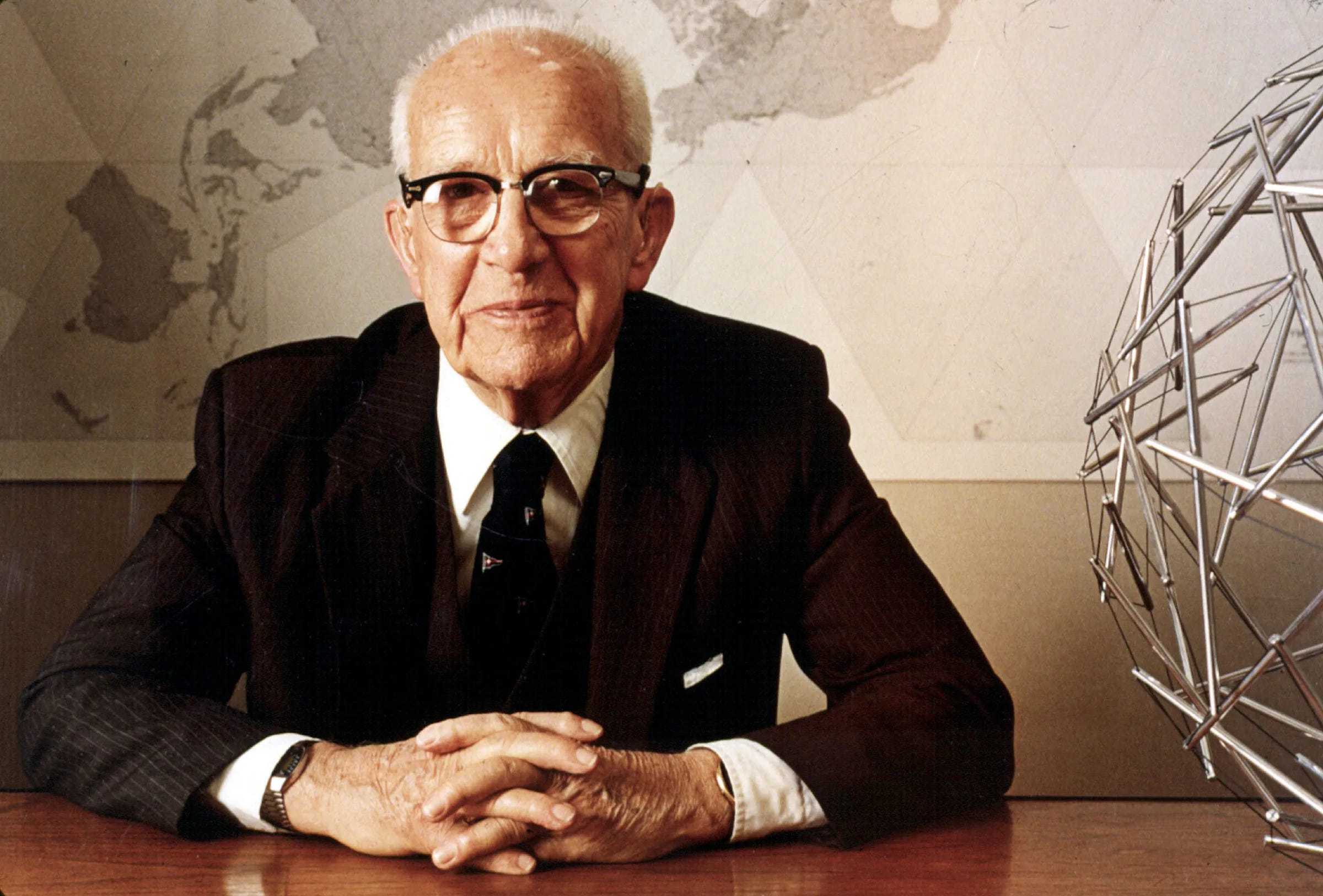


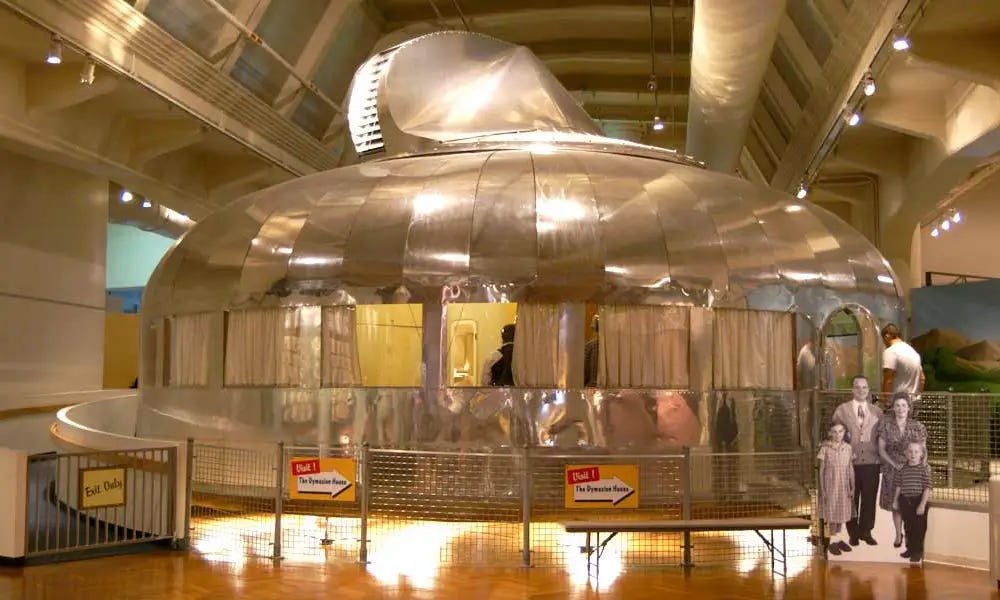

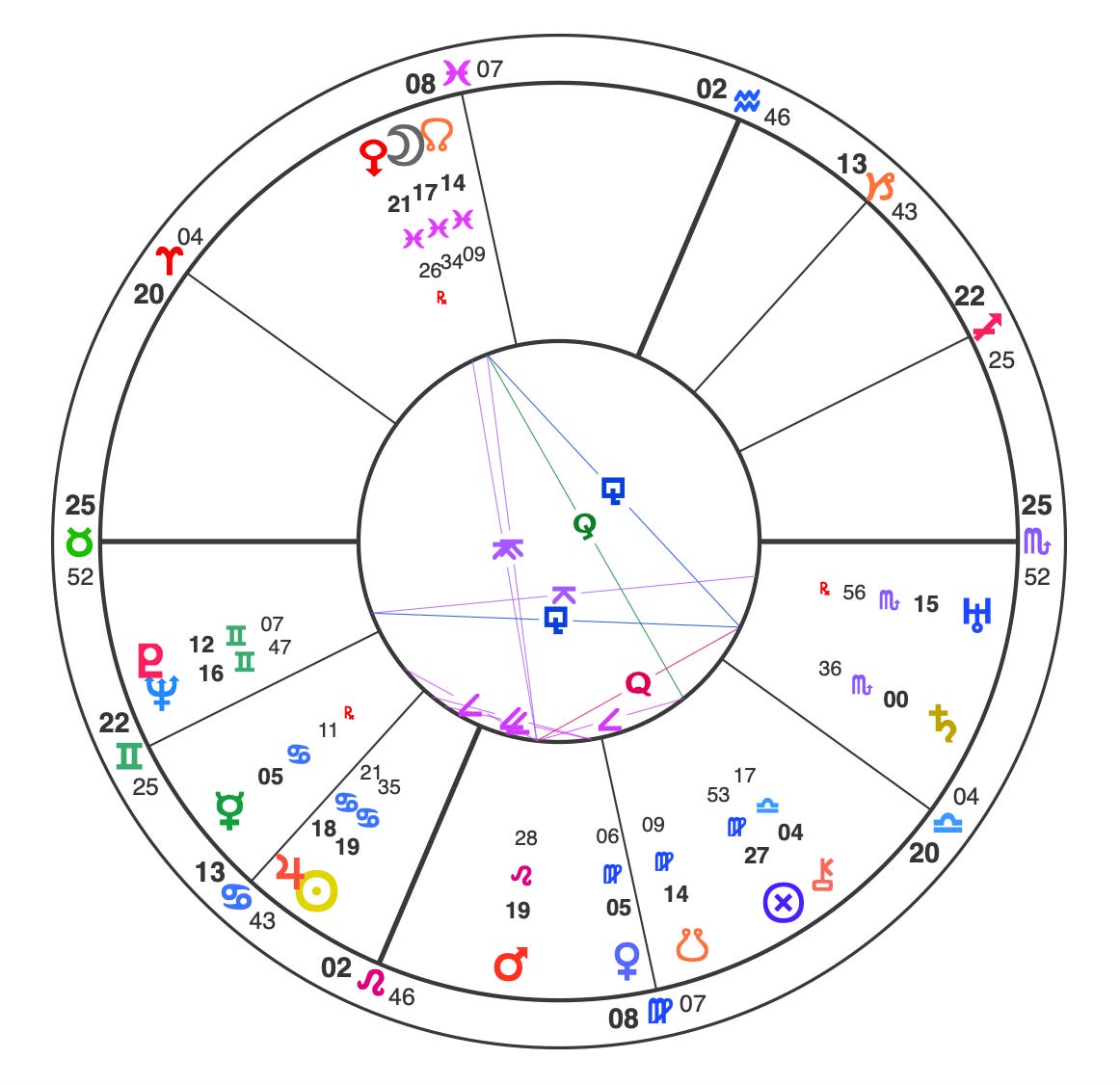
















Bucky Fuller: Brilliant Chart, Soulful Man